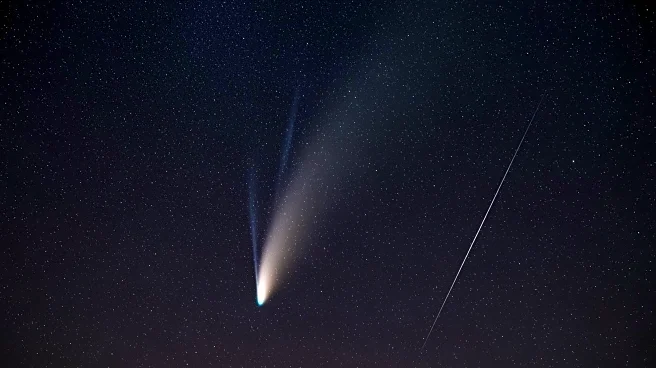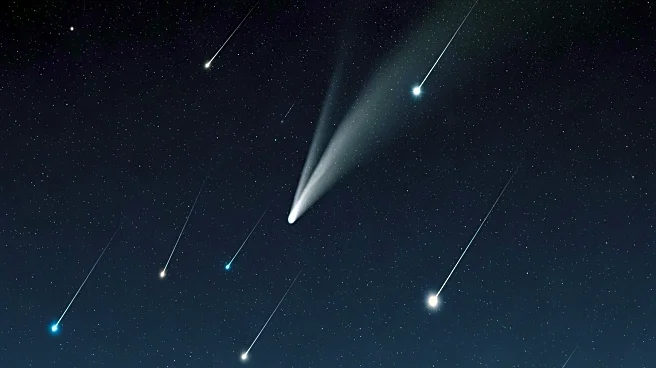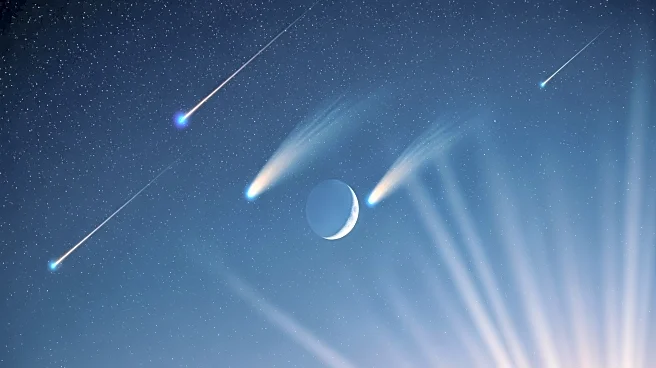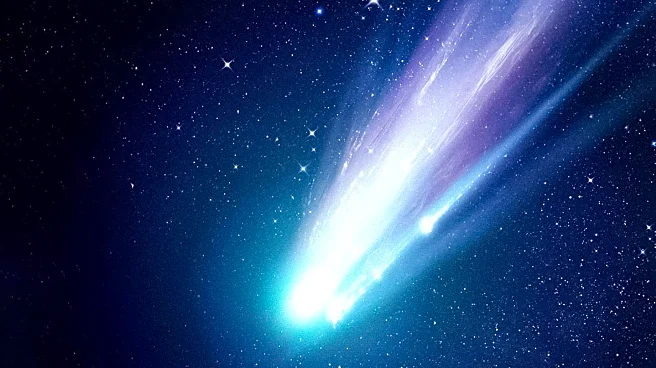What's Happening?
Comet Lemmon, a long-period comet discovered in January 2025, is currently visible in the Alaskan night sky. The comet will make its closest approach to Earth on October 21, 2025, at a distance of approximately
55 million miles. Known for its bright appearance, Comet Lemmon is best viewed with binoculars due to its dim visibility to the naked eye. The comet's tail was recently affected by solar winds, temporarily altering its appearance. Viewing opportunities will diminish after this week as the comet continues its journey towards the sun.
Why It's Important?
The appearance of Comet Lemmon provides a rare opportunity for Alaskan residents to witness a celestial event that occurs once in a millennium. This event highlights the importance of astronomical research and the role of observatories in discovering and tracking celestial bodies. For the public, it offers a chance to engage with astronomy and appreciate the natural wonders of the universe. The event also underscores the need for preserving dark skies, which are essential for astronomical observations and are increasingly threatened by light pollution.
What's Next?
Skywatchers are encouraged to take advantage of the current viewing conditions by finding locations with minimal light pollution. As the comet approaches its perihelion on November 8, its visibility will decrease, making this week a prime time for observation. Astronomy clubs and observatories may organize events to facilitate viewing and provide educational resources. This event also serves as a reminder of the importance of supporting scientific research and exploration, which can lead to new discoveries and a deeper understanding of our universe.











